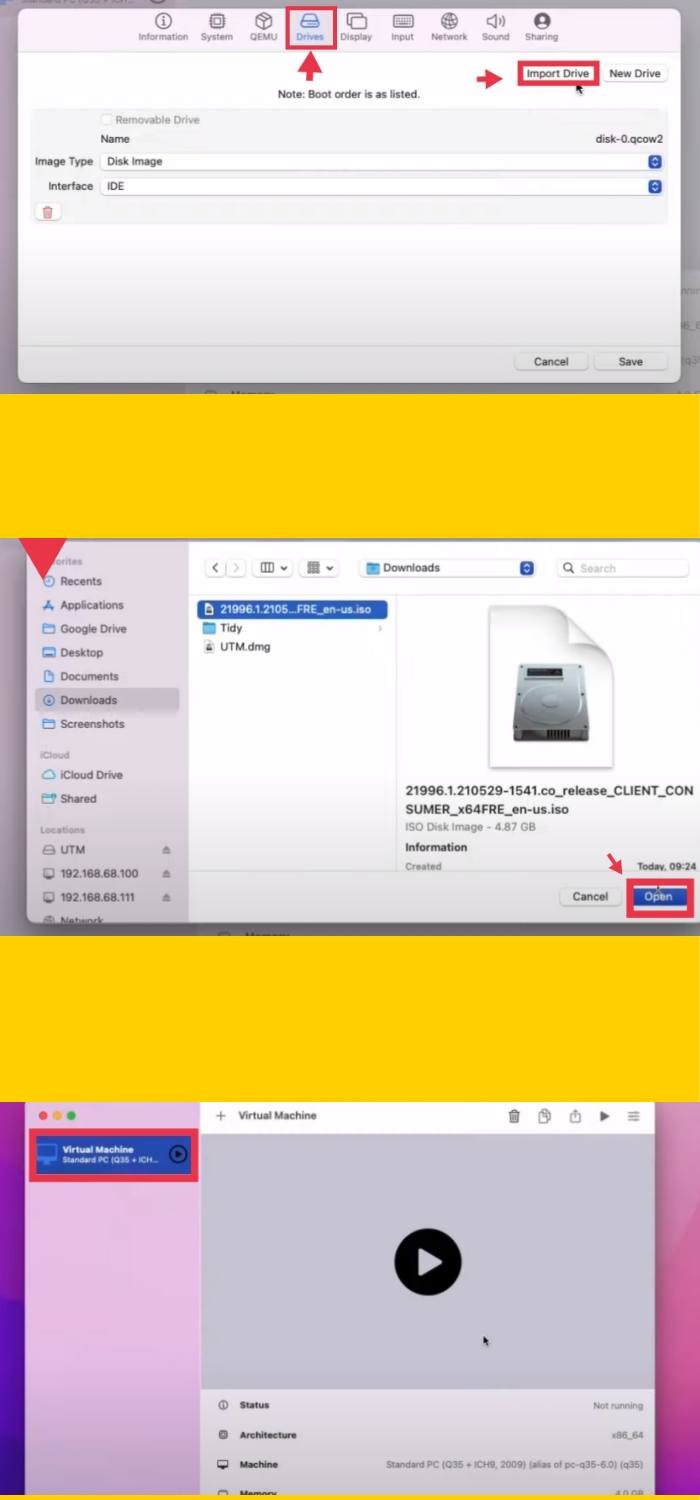

- #VIRTUALBOX M1 MAC INSTALL#
- #VIRTUALBOX M1 MAC WINDOWS 10#
- #VIRTUALBOX M1 MAC SOFTWARE#
- #VIRTUALBOX M1 MAC CODE#
- #VIRTUALBOX M1 MAC PASSWORD#
Mach-O is a published and open format, though, so as Corellium notes in its blog post, it was possible to get the port going. On Apple Silicon, that wrapper layer is gone.
#VIRTUALBOX M1 MAC INSTALL#
Anybody who's ever built a Hackintosh and had a boot problem probably had nightmares about "mach-o has a bad magic number" while trying to install the OS.Ĭorellium says that Arm-based Linux distributions have more or less settled on a format to get the system running which is nothing like Apple's Mach-O boot loader on macOS. On Intel-based Macs, the UEFI BIOS and Boot Camp worked together to form a wrapper to get other operating systems running. NeXTSTEP and macOS both use Mach-O executable files, which is just a different format of executable from a WinPE executable that Windows uses on UEFI platforms, or the binary files that Arm-based Linux tends to use. It's based on the Mach microkernel, not GNU Linux, and has its own method for booting a system. The Macintosh operating system, which itself finds its roots in NeXTSTEP system developed by Steve Jobs' other computer company, NeXT. In a series of tweets, Corellium's Chief Technical Officer Chris Wade recently showed off Ubuntu running on an Apple M1-powered Mac mini, so we felt compelled to explore it a little ourselves as well. According to Corellium, those implementation differences are what made it a bit more difficult to get running Ubuntu. Being an architecture licensee, Apple is beholden to nobody in the way that its chips implement the ISA and boot an operating system. Those systems had been locked into macOS 11 Big Sur, but thanks to Arm-based virtual cloud device maker Corellium, Ubuntu Linux is now "completely usable."Īrm offers an array of licenses to its architecture that range from processor licenses, in which a chip vendor can whole hog plug modules of Arm CPU cores into a chip, to the more abstracted architecture license, which is what Apple uses to develop custom Arm64 CPUs for its own devices. With the advent of Apple Silicon Macs (such as the recent Mac mini) that have the company's M1 SoC under the hood, Apple discontinued Boot Camp. Apple even included a Windows preparation tool, Boot Camp, on all of its systems with Intel Core processors. The default is “VDI (VirtualBox Disk Image),” which is Oracle’s proprietary container format.One of the more pragmatic aspects of Intel-powered Macs was their ability to run alternative operating systems, including Windows and Linux, without much effort at all. Next, you have to decide which type of hard disk to create. Since this is likely the first VM you’re setting up on this machine, click the radio button next to “Create a Virtual Hard Disk Now,” and then click “Create.” Now, you have to decide the size of the hard disk for your VM, or if you want one at all. You can always change this later in “Settings.”
#VIRTUALBOX M1 MAC CODE#
Heavier code or applications might require at least 2 GB, though. The default recommendation is 2,048 MB, which is enough to run most installers. On the following screen, choose how much RAM (the amount of memory) you want to allocate to your VM, and then click “Continue.” Keep in mind if you set this too high, your Mac won’t have enough memory to run. You can choose a different “Machine Folder” to store the VMs. If you type the name of any available OS (like “Windows 10”), the “Version” field automatically switches to that OS. You can name your new operating system whatever you want. Open Virtual Box (via the “Applications” folder or via a Spotlight Search).
#VIRTUALBOX M1 MAC WINDOWS 10#
Now that you’ve installed VirtualBox on your Mac, it’s time to load up your Windows 10 virtual machine. Click “Close” and “Move to Trash” since you no longer need the installation file.

Remove any leftover files, reinstall a fresh copy of VirtualBox, and then immediately reopen the “Security and Privacy” menu to see this option. If you don’t see this text, open the “Applications” folder and drag the VirtualBox icon to the Trash to uninstall it. Note that this option is only available for 30 minutes after a fresh install of VirtualBox.
#VIRTUALBOX M1 MAC SOFTWARE#
Near the bottom of the General tab, you should see some text that says software from Oracle America, Inc. Alternatively, you can click Applications > System Preferences > Security and Privacy. To grant permission, click the magnifying glass at the top right, type “Security,” and then press Enter. If you haven’t given your Mac permission to install programs from Oracle previously, it’s highly likely the installation will fail at this stage.
#VIRTUALBOX M1 MAC PASSWORD#
When everything is the way you want it, click “Install.” If asked, type the password for your Mac.


 0 kommentar(er)
0 kommentar(er)
